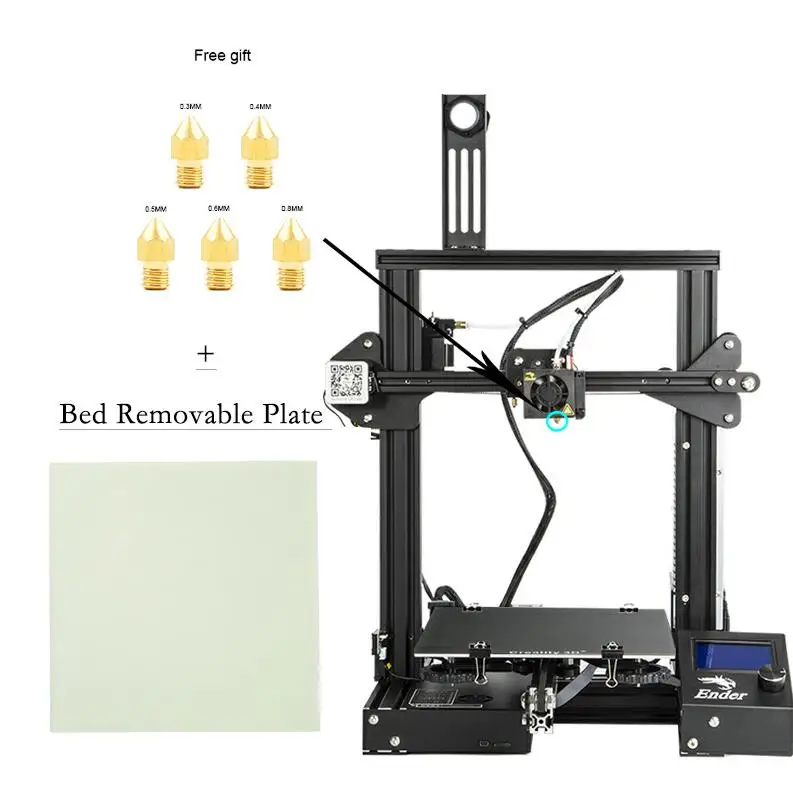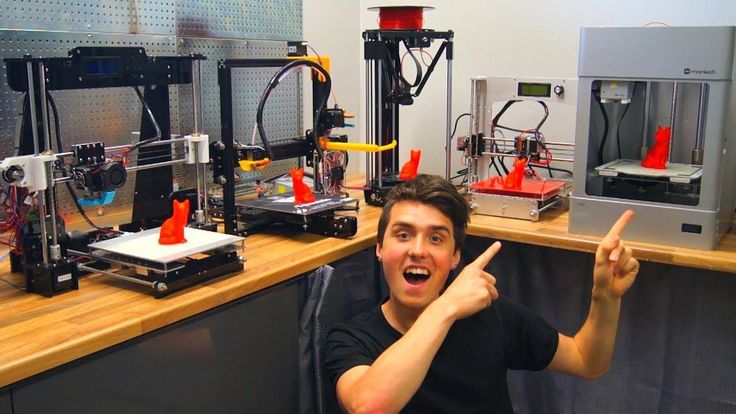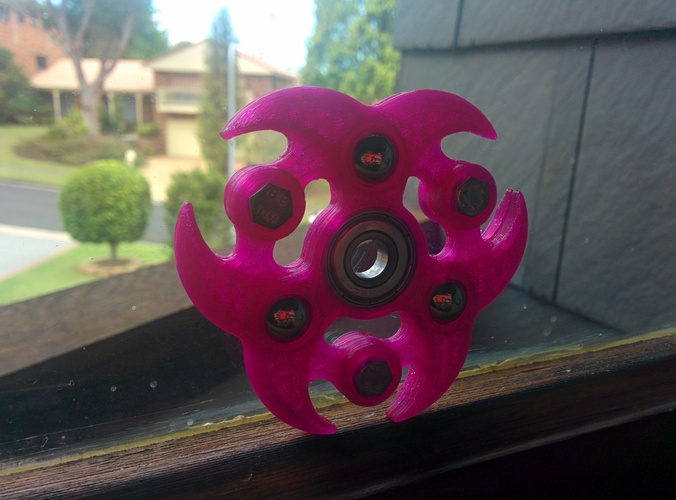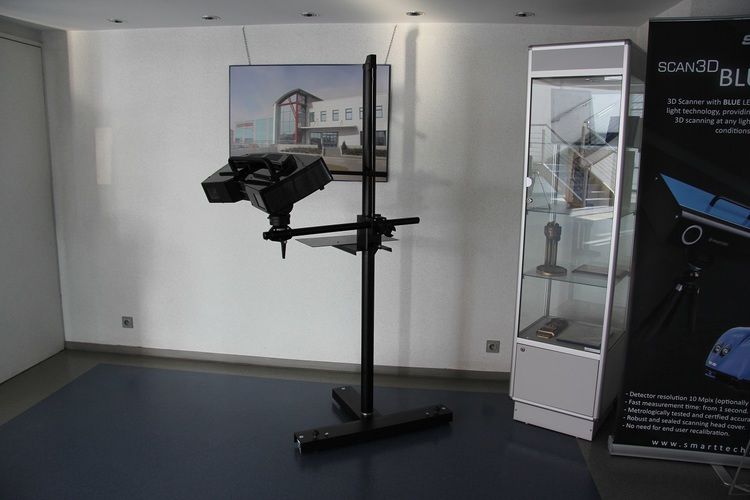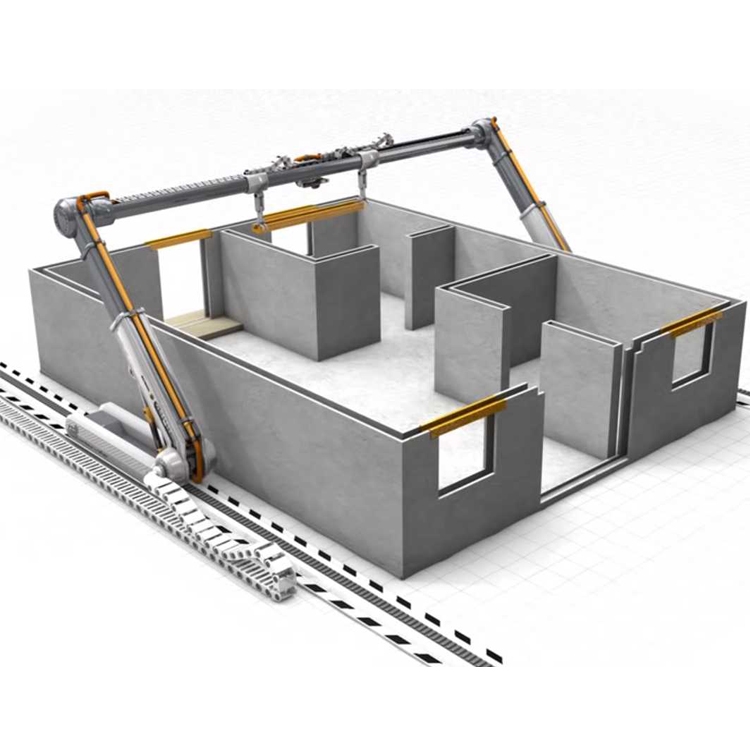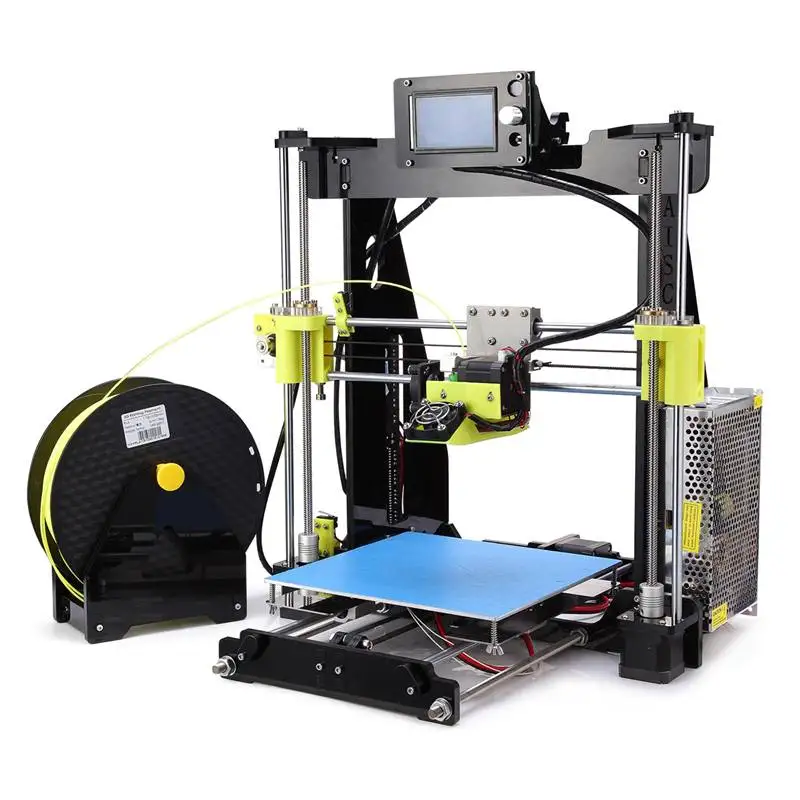3D printer gun control
What Are 3D-Printed Guns, and Are They Legal?
For decades, weapons manufacturing has been the domain of arms industry heavyweights: Glock, Sig Sauer, Remington, Sturm, Ruger & Co. Making a gun from scratch at home required thousands of dollars of machining equipment and years of engineering expertise.
But in recent years, that has begun to change. Advancements in 3D-printing technology have yielded increasingly reliable 3D-printed firearms, many of which require no federally regulated components to function. Below, we break down the basics of plastic, 3D-printed firearms, and the controversy generated by the swelling movement to deliver them to the masses.
What is a 3D-printed gun?In the simplest terms, it’s any firearm that includes components manufactured with a 3D printer.
But 3D-printed guns vary a lot. Some models — like the 3D-printed gun company Defense Distributed’s “Liberator” — can be made almost entirely on a 3D printer. Others require many additional parts, which are often metal. For example, many 3D-printed gun blueprints focus on a weapon’s lower receiver, which is basically the chassis of a firearm. Under federal law, it’s the only gun part that requires a federal background check to purchase from a licensed dealer. To subvert regulators, some people print lower receivers at home and finish their guns using parts that can be purchased without a background check — metal barrels, for example, or factory buttstocks. Many gun retailers sell kits, which include all the components necessary to assemble a gun at home.
Advances in printing technology have driven the price of 3D printers down — they’re now around $200 on Amazon — and gun groups offer guides for getting started. These developments have lowered the barriers to entry for those in search of untraceable guns, which have turned up at crime scenes with increasing frequency over the past few years.
The process still remains more involved than most methods of obtaining a firearm, though.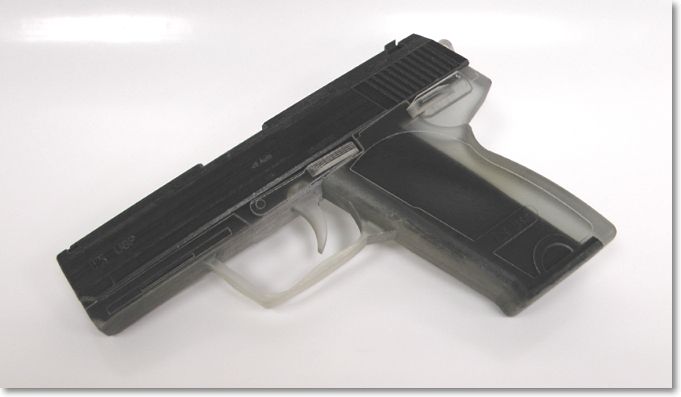 For instance, 3D printers require meticulous setup — the component that extrudes plastic must be calibrated, software must be downloaded to convert designs into 3D-printable slices, and the printer must undergo a slew of upgrades to reliably print weapons parts, which themselves require precise construction to ensure they can contain the explosion from a gunshot.
For instance, 3D printers require meticulous setup — the component that extrudes plastic must be calibrated, software must be downloaded to convert designs into 3D-printable slices, and the printer must undergo a slew of upgrades to reliably print weapons parts, which themselves require precise construction to ensure they can contain the explosion from a gunshot.
Because 3D-printed guns are made outside traditional supply chains, and don’t require background checks, they’re effectively invisible to law enforcement agencies. They are a form of ghost gun: unserialized, and unable to be traced if recovered by law enforcement.
There isn’t good data on the number of 3D-printed firearms that have turned up at crime scenes, though state attorneys general opposed to the technology insist that some have been recovered. On a few occasions, crimes involving the guns have made headlines. In February 2019, police arrested a Texas man after he was found test-firing a 3D-printed gun in the woods.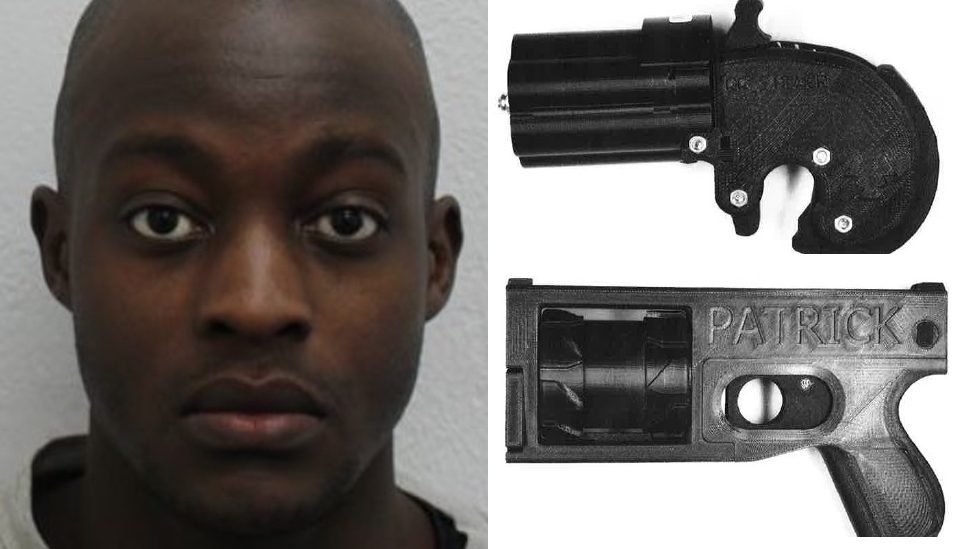 He was prohibited from purchasing firearms and had a hit list of lawmakers on him.
He was prohibited from purchasing firearms and had a hit list of lawmakers on him.
Of particular concern to many law enforcement agencies are guns that can be completely 3D-printed at home without metal components. Politicians and law enforcement professionals fear that such guns would be able to evade metal detectors, and thus slip into places where firearms are prohibited, like airports or government buildings. At present, these fears are largely unfounded — 3D-printed gun designers have yet to develop an alternative to metal bullets, and security officials say that X-ray detection in place alongside most metal detectors can identify the outline of 3D-printed firearms with ease. Indeed, Transportation Security Administration officers have seized 3D-printed firearms at airports on several occasions.
Still, the weapons’ lack of traceability has already caught the attention of terror groups, according to Mary McCord, a former U.S. attorney and prosecutor in the Department of Justice’s National Security Division. “We know from a counterterrorism perspective that there’s great interest among terrorist organizations in being able to have workable, usable, efficient, functioning 3D-printed weapons.”
“We know from a counterterrorism perspective that there’s great interest among terrorist organizations in being able to have workable, usable, efficient, functioning 3D-printed weapons.”
In most cases, yes. Federal law permits the unlicensed manufacture of firearms, including those made using a 3D printer, as long as they include metal components.
In the absence of federal regulation, a handful of states have taken their own steps to clamp down on the creation of homemade guns. In California, anybody manufacturing a firearm is legally required to obtain a serial number for the gun from the state, regardless of how it’s made. In New Jersey, you are supposed to obtain a federal manufacturing license before 3D-printing a gun. The state also criminalizes the manufacture, sale, or possession of undetectable firearms, and made it illegal to purchase parts to make an unserialized gun. Several states — including New Mexico and Virginia — are considering bills that would enact similar restrictions.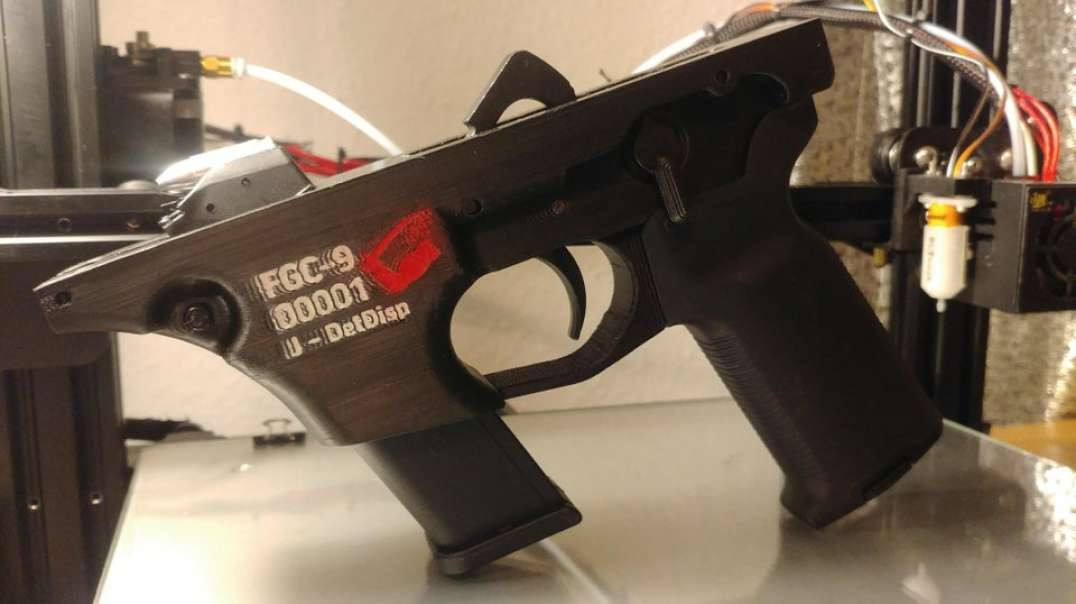
The legality of sharing the files required to print guns and gun components is murkier territory. No federal legislation bans the practice. But in 2013, the State Department ruled that releasing blueprints online violated arms export laws. In 2018, after a lengthy court battle with Defense Distributed over the guidance, the State Department settled, and agreed to permit the files’ release. But before the prohibition was lifted, a coalition of states sued to keep it in place — and won. Now, gun groups intent on sharing the files online have exploited a loophole in the State Department’s policy, which allows for the distribution of blueprints exclusively to U.S. residents. Defense Distributed maintains it has established a vetting procedure to ensure only U.S. residents are able to download them.
In 2019, the Trump administration transferred oversight of gun exports from the State Department to the Commerce Department, which would have rolled back restrictions on releasing 3D-printed gun blueprints.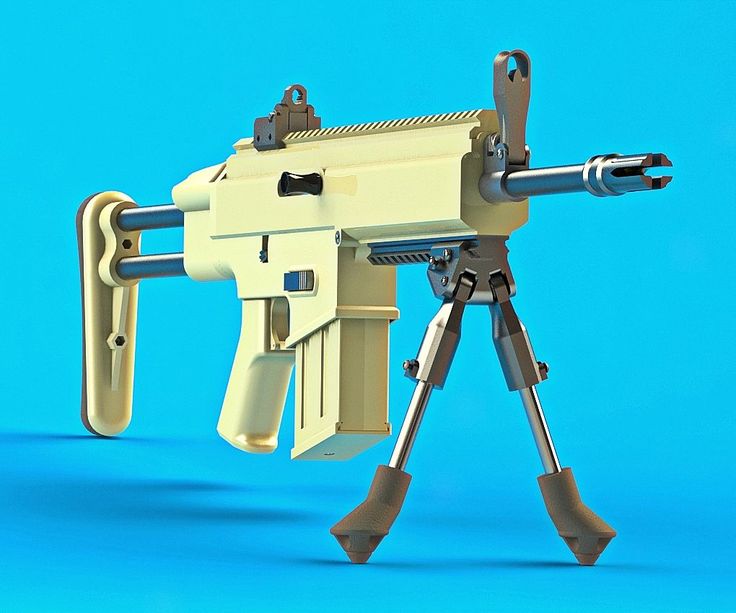 But a second suit filed by the coalition of state attorneys general has kept oversight of the files with the State Department, pending future litigation.
But a second suit filed by the coalition of state attorneys general has kept oversight of the files with the State Department, pending future litigation.
New Jersey Attorney General Gurbir Grewal is a plaintiff in the case. “If a company like Defense Distributed can simply sell printable [gun blueprints] to their customers without running the usual required background checks to make sure someone’s not a criminal, it would blow up the entire regime of firearm laws that we have in this country,” he said.
In 2019, after Grewal sought an injunction to block Defense Distributed from releasing files to New Jersey residents, the company countersued. It alleges that the blueprint files are a form of speech, and that Grewal’s effort to block their release violates the First Amendment. The case has yet to go to trial.
Who is printing guns — and why?The first 3D-printed firearm to make a splash in the popular consciousness was the “Liberator” — a near fully plastic gun designed by a self-described anarchist and ghost-gun advocate named Cody Wilson. (Designs for the Liberator call for a small steel block to be sealed inside the plastic in order to comply with federal law.) Wilson founded Defense Distributed to advance and share the technology, and has initiated many of the group’s highest profile legal battles. In 2019, Wilson was sentenced to probation and ordered to register as a sex offender after soliciting sex from a minor.
(Designs for the Liberator call for a small steel block to be sealed inside the plastic in order to comply with federal law.) Wilson founded Defense Distributed to advance and share the technology, and has initiated many of the group’s highest profile legal battles. In 2019, Wilson was sentenced to probation and ordered to register as a sex offender after soliciting sex from a minor.
Though Wilson’s is the best-known and formally recognized gun printing “company,” the practice is mostly advanced by informal collectives across the internet. These groups, like Deterrence Dispensed and Fosscad, gather anonymously in chat rooms and on social media platforms to crowdsource the development of new gun designs and spread them across the web. They have thousands of members, but remain mostly decentralized, making it difficult for technology companies or law enforcement agencies to police them.
Over the past two years, however, the groups have run up against censorship policies at major tech platforms, many of which prohibit weapons content.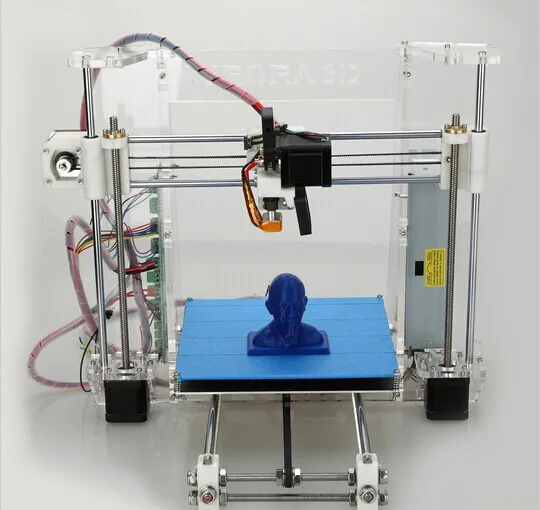 As a result, they’ve been forced to increasingly obscure corners of the internet. Most recently, the operations hub for most of the 3D-printed gun groups — an encrypted chat and file-sharing platform called Keybase — pledged to remove all weapons-related content, and told the groups they would be banned.
As a result, they’ve been forced to increasingly obscure corners of the internet. Most recently, the operations hub for most of the 3D-printed gun groups — an encrypted chat and file-sharing platform called Keybase — pledged to remove all weapons-related content, and told the groups they would be banned.
Proponents of the technology fall into several different camps. Some, like Mustafa Kamil, a creator of 3D-printable guns based in Romania, and a member of the Deterrence Dispensed team on Keybase, think that concerns over homemade weapons are overblown. Gun printing, he says, is mostly the domain of hobbyists like himself: technical experts interested in tinkering and engineering. To 3D-print a gun: “you need to have enough money to buy a printer. Then you need enough expertise and experience to know how to use the printer. If your axis is off by 0.15 millimeters the gun isn’t going to work,” he said. “To buy a black market firearm would be much easier.” Kamil said he’s owned 32 printers and completed two apprenticeships with gun manufacturers.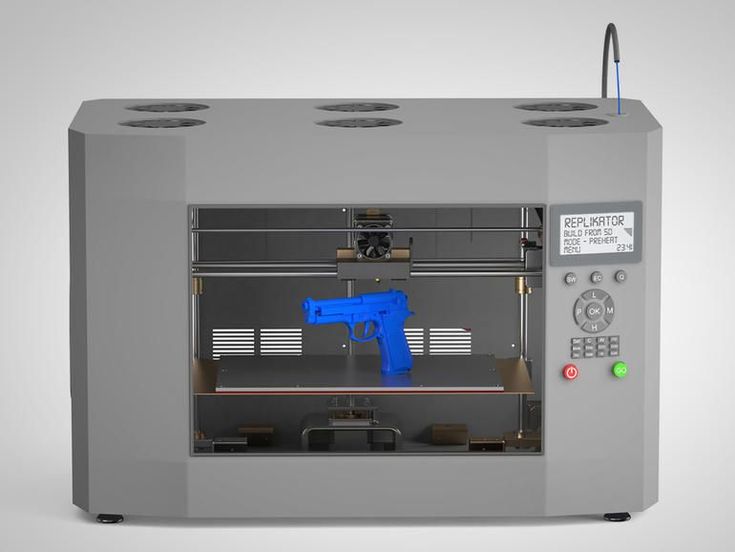
Others see the potential for armed conflict with the government as the driving force behind their creations. Members of Deterrence Dispensed and Defense Distributed have fashioned a brand out of this perceived threat, adopting popular Second Amendment slogans like “Come and Take It,” “Live Free or Die,” and “Free Men Don’t Ask.” Leaders of the groups share a deep conviction that gun ownership is the only way to ensure freedom: In an interview with Popular Front, a conflict journalism outfit, the founder of Deterrence Dispensed — a man who goes by the username jstark — continuously pointed to the threat of government tyranny as a justification for creating 3D-printed guns and distributing their blueprints. “Just look at the Uighurs in China,” he said, referring to the ongoing genocide of the ethnic minority. “Just look what’s happening to them. No one’s helping them. Nobody does shit. You know what would help them? If they were armed. That would be a deterrence.”
To jstark, identical threats exist anywhere where civilians are largely unarmed, including in Europe, where he lives.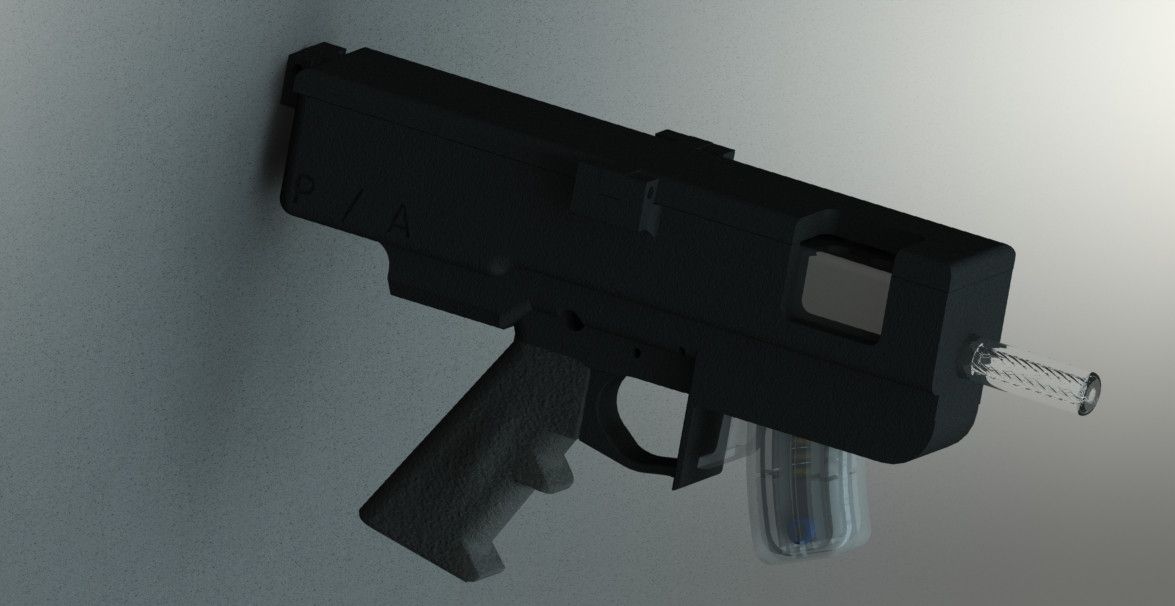 When asked if he would fight police who tried to confiscate his guns, he was frank: “Basically, yes. Live free, or die. These are not empty words.”
When asked if he would fight police who tried to confiscate his guns, he was frank: “Basically, yes. Live free, or die. These are not empty words.”
While politicians and law enforcement agencies have dubbed the advocates of 3D-printed firearms extremists, the movement has no unifying political ideology. Jstark, for his part, said in the Popular Front interview that Deterrence Dispensed has no tolerance for people who wish to harm others: “If they do show through [their actions] that they’re extremists, racists, islamic terrorists — then we would kick them out immediately,” he said. He did not respond to multiple requests for comment.
The alarmism about about looming government tyranny has attracted groups eager to ignite government conflict, particularly in the U.S. Members of groups connected to the boogaloo, a loose-knit coalition of anti-government extremists that advocates a violent civil war, have seen 3D-printed gun advocates as allies in an overlapping struggle.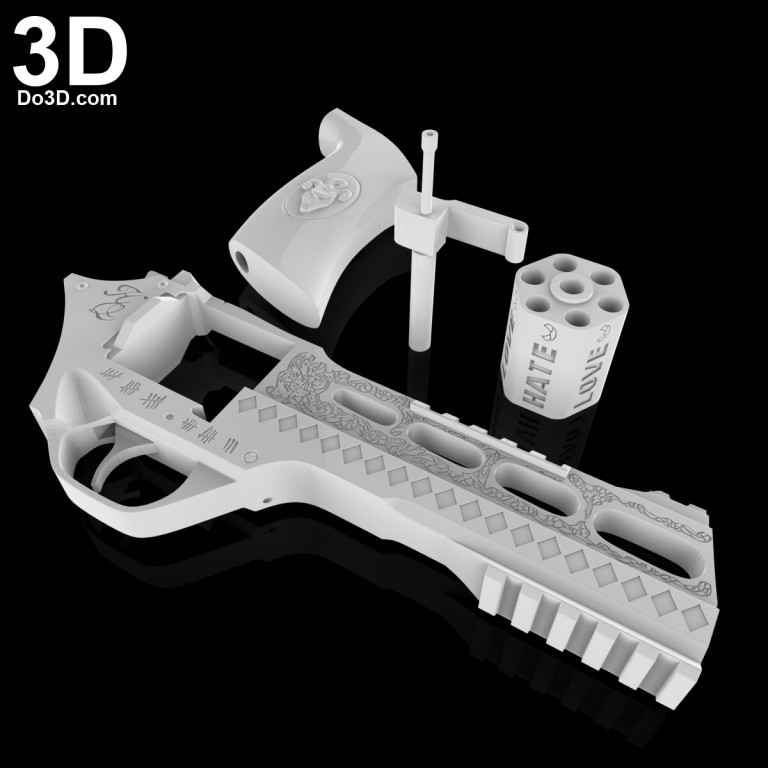 Last summer, Megan Squire, a professor at Elon University, tracked online boogaloo-connected groups as they navigated crackdowns from social media platforms. Many ended up on Keybase, drawn by the large and growing 3D-printed gun community.
Last summer, Megan Squire, a professor at Elon University, tracked online boogaloo-connected groups as they navigated crackdowns from social media platforms. Many ended up on Keybase, drawn by the large and growing 3D-printed gun community.
In early April, Deterrence Dispensed released blueprints for a printable auto sear — a component that can be used to turn a semiautomatic rifle into an illegal, fully automatic firearm — called the “Yankee Boogle,” an apparent boogaloo reference. In September, two boogaloo adherents were charged for allegedly attempting to sell auto sears to representatives of Hamas, the Islamist extremist group. In court documents, prosecutors alleged that one of the defendants in that case said he obtained the auto sears from a supplier who 3D-printed them. In a separate case, federal prosecutors charged a man from West Virginia with 3D-printing auto sears and selling more than 600 of them online, including to several boogaloo adherents. One man who bought the 3D-printed auto sears is accused of killing a police officer and a security guard in California.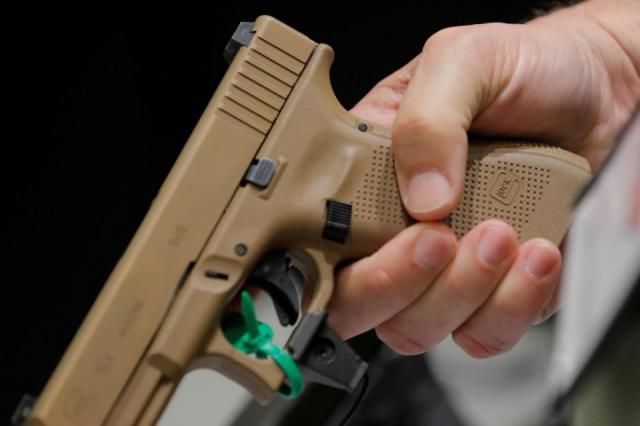 It is unclear if any of the auto sears used in these crimes were designed by Deterrence Dispensed.
It is unclear if any of the auto sears used in these crimes were designed by Deterrence Dispensed.
Correction: An earlier version of this article highlighted a case in which police in Rhode Island said a suspect used a 3D-printed gun in a murder. While police initially made that claim, an analysis by the state crime lab later ruled the method of manufacture “undetermined.” The story has also been updated to include that Defense Distributed’s “Liberator” gun model includes a small metal component for federal compliance.
3D-printed guns are back, and this time they are unstoppable
Jake Hanrahan
Business
A decentralised network of gun-printing advocates is mobilising online, they're anonymously sharing blueprints, advice and building a community. There's no easy way they can be halted
There's no easy way they can be halted
A new network of 3D-printed gun advocates is growing in America – and this time things are different. Unlike previous attempts to popularise 3D-printed guns, this operation is entirely decentralised. There’s no headquarters, no trademarks, and no real leader. The people behind it reckon that this means they can’t be stopped by governments.
“If they [the government] were to come after me, they’d first have to find my identity,” says Ivan the Troll, a member of the group. “I’m one of many, many like-minded individuals who’re doing this sort of work.”
Known only by his online moniker, Ivan the Troll is the de facto spokesman of an underground wave of 3D-printing gunsmiths. Ivan says he knows of at least 100 people who are actively developing 3D-printed gun technology, and he claims there are thousands taking part in the network. This loose-knit community spans across the whole world.
They communicate across several digital platforms, including Signal, Twitter, IRC, and Discord. They critique each other's work, exchange 3D gun CAD files, offer advice, talk theory, and collaborate on future blueprints. These 3D-printed gun enthusiasts – who share similar ideas and political viewpoints on gun control – mostly found each other online via gun control subreddits and forums.
They critique each other's work, exchange 3D gun CAD files, offer advice, talk theory, and collaborate on future blueprints. These 3D-printed gun enthusiasts – who share similar ideas and political viewpoints on gun control – mostly found each other online via gun control subreddits and forums.
Ivan is just one small part of this network. He says he is from Illinois, and is of “college age”, but otherwise he remains mostly anonymous, to lie low. At the same time though, he’s launched bombastic PR videos demonstrating the new 3D-printed gun parts he’s created in his garage, including a Glock 17 handgun frame.
One of his most recent videos shows the polymer Glock 17 frame in various stages of production in his workshop. The footage is set to fast-paced synthwave music and is run through a trendy VHS filter – the aesthetics are important. Toward the end, Ivan fires several rounds with the fully built handgun, as text flashes up saying “ANYONE CAN MAKE IT”, “LIVE FREE OR DIE”, and “GO AHEAD TRY TO STOP THIS YOU FILTHY STATISTS”.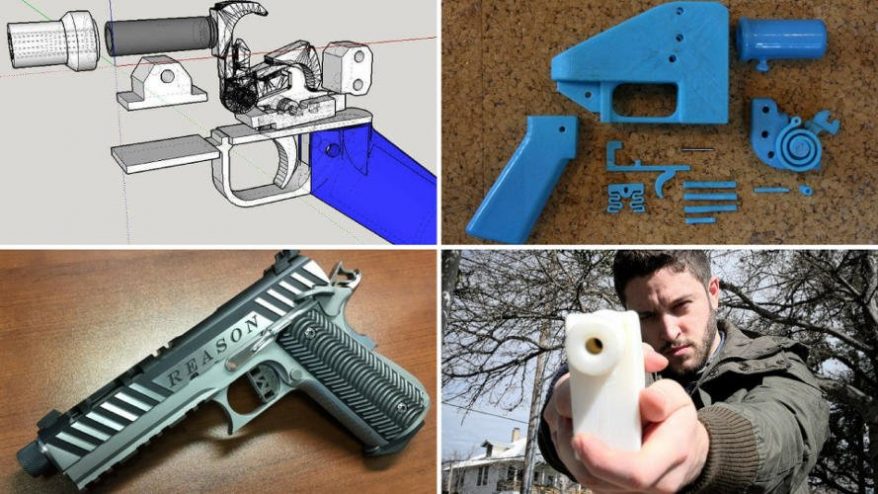 He’s also uploaded the complete CAD reference model designs for a 3D-printed AR-15 assault rifle to his file-sharing space online. It’s clear Ivan is trying to provoke his detractors as much as possible.
He’s also uploaded the complete CAD reference model designs for a 3D-printed AR-15 assault rifle to his file-sharing space online. It’s clear Ivan is trying to provoke his detractors as much as possible.
In February of this year, Ivan and his group decided to name themselves “Deterrence Dispensed”, which is a tongue-in-cheek nod to the notorious Defence Distributed – a 3D-printing gun company formerly run by Texan crypto-anarchist Cody Wilson.
Most Popular
In September 2018, Wilson, 30, was arrested and charged with sexual assault against a minor. He is alleged to have paid $500 to have sex with a 16-year-old girl in his home city of Austin, Texas. Needless to say, this arrest effectively took Wilson out of the 3D-printed gun world entirely. Many of the people who looked up to him were either disgusted or realised that his time was up. He stepped down from Defence Distributed, which was before seen as the driving force behind 3D-printed guns since it launched in 2012.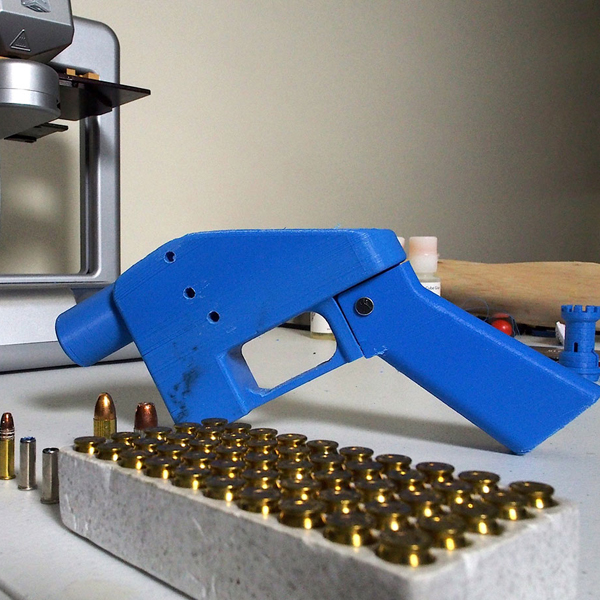 Wilson was released on a $150,000 bail, but has remained silent since.
Wilson was released on a $150,000 bail, but has remained silent since.
Defence Distributed has many other ongoing legal battles. Attorney generals from more than 20 US states are currently in the process of suing the company – which has countersued – in a bid to reverse a court win that momentarily allowed Defence Distributed to upload and share 3D-printed gun blueprints online. Their headaches are long, drawn out, and ongoing. (New York State has just passed a law to ban 3D-printed guns).
For Ivan’s group, Deterrence Dispensed, none of this is relevant. They’re uploading these files individually on services such as Spee.ch, a media-hosting site underpinned by the LBRY blockchain, and they aren’t waiting for anyone to give them permission. They’ve made their own 3D-printed gun designs, modified old ones, and are keeping all the Defence Distributed ones available for free too.
“Even if there was no government telling me I couldn’t do this, I think that I would still do it,” Ivan says. “Some people get a kick out of video games, I like spending hours and hours drawing stuff on CAD.”
“Some people get a kick out of video games, I like spending hours and hours drawing stuff on CAD.”
Ivan isn’t just “drawing stuff on CAD” though. He’s providing free files to help anyone with a half-decent FDM (Fused Deposition Modeling) 3D printer and some hand tools to make a workable handgun. Once the CAD file is downloaded, it’s opened in a “slicer” program that translates the CAD files into instructions that the 3D printer can understand. Once the 3D-printed gun parts are ready, they can be assembled into a fully workable gun.
The CAD gun designs put out by Deterrence Dispensed are so well-made, according to Ivan, that they’re not just “workable”, but superior. “Our AR15 CAD model is the best in the public domain without a doubt,” says Ivan.
Most Popular
Despite being overtly antagonistic Ivan has had no real run-ins with the authorities so far. His Twitter account was permanently suspended after New Jersey state senator Bob Menendez lobbied for it to be taken down, but as far as the government and law enforcement goes, things have been mostly quiet.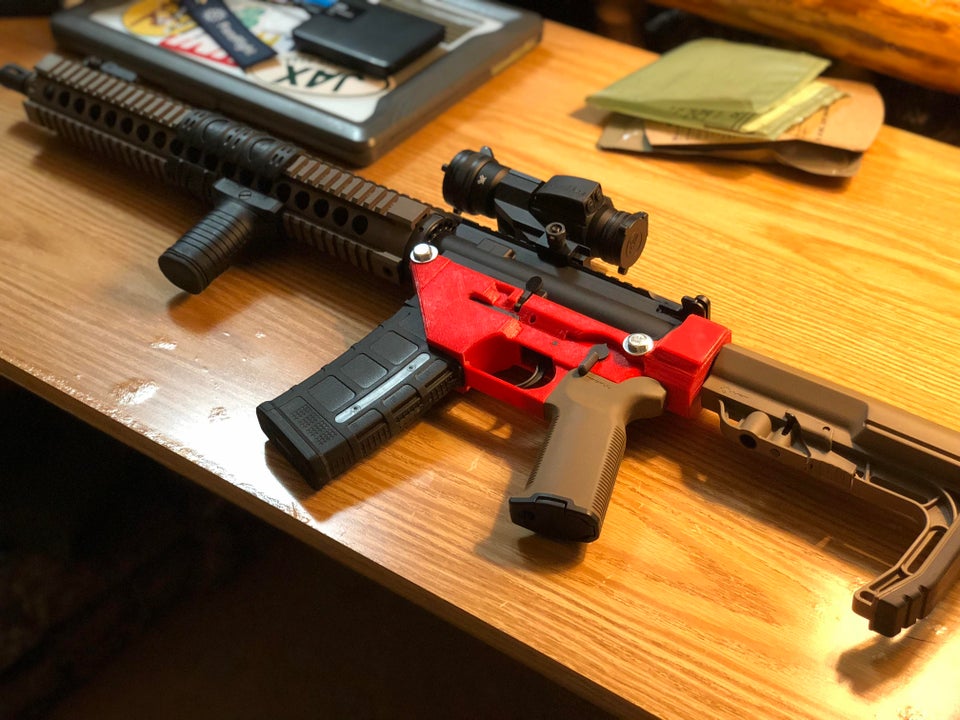
Ivan sees himself, and other radical 3D-printing gun groups such as FOSSCAD (another decentralised group of 3D-printing enthusiasts who focus on firearms), simply as hobbyists who’ve chosen the “wrong” thing to build. He sees 3D-printed guns as somewhat of a paper tiger. He points out that while 3D-printed gun parts can be built to kill people, zip guns (homemade firearms built from crude materials) have been around for decades and are arguably more deadly. The hysteria and backlash, to Ivan at least, is completely misplaced.
“Take it from me as someone who’s printed a gun. Making a slam-fire shotgun is 100 times easier, 100 times quicker, and about 100 times cheaper than printing a [regular] gun. For eight dollars I can pop down to Home Depot and build a shotgun.”
Already in 2019, 156 people have already been killed in US mass shootings, and gun-related deaths are at a 20-year high. In March, a terrorist armed with two semi-automatic rifles and two shotguns killed 51 people in an anti-muslim attack in Christchurch, New Zealand.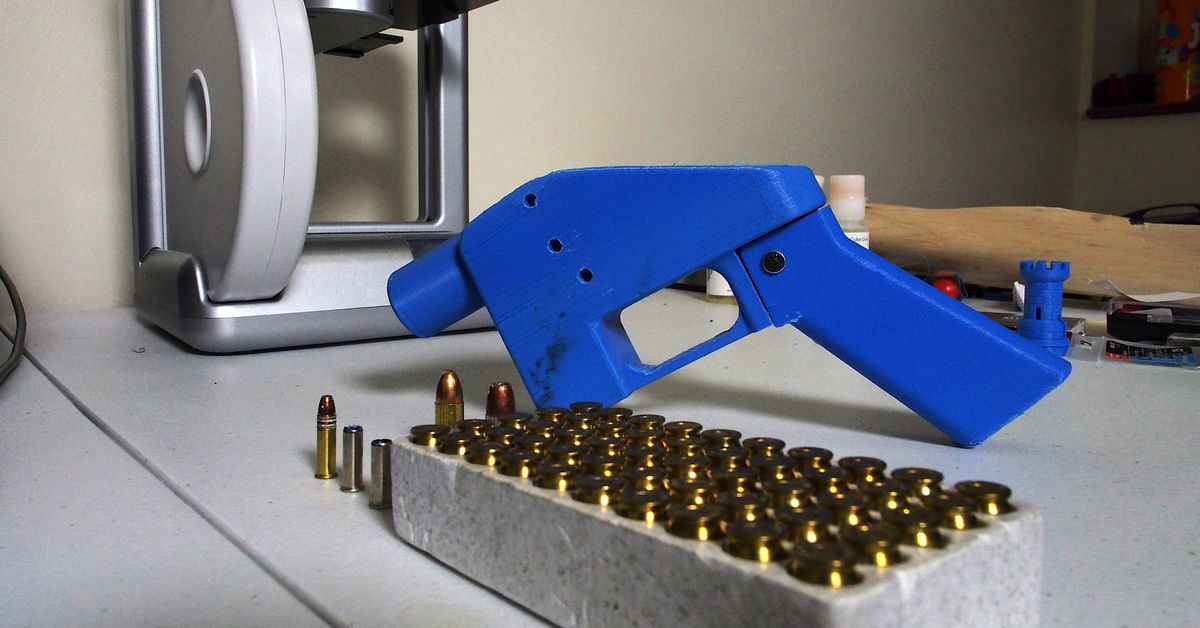 In such circumstances, do the US (and the world) really need more guns – zip gun, 3D-printed, or otherwise? Ivan thinks yes.
In such circumstances, do the US (and the world) really need more guns – zip gun, 3D-printed, or otherwise? Ivan thinks yes.
“The cops killed more people alone last year than all active shooter incidents in the last ten years,” he says. “We live in a society, in America, where you run the risk of a cop blowing your ass up for no specific reason. You don’t even have to present a threat to them. A cop can kill you and get away with it just because he really wanted to do it.”
He then went on to cite the many police shootings of unarmed black men in American, specifically mentioning Stephon Clark. Clark, 22, was shot to death by police in his own back garden while holding nothing but a mobile phone. “I believe it is inherently important that … you should be able to own a gun,” Ivan continued. “You should be able to own the same legal force that the cops are using to control you.”
Most Popular
But the facts are clear.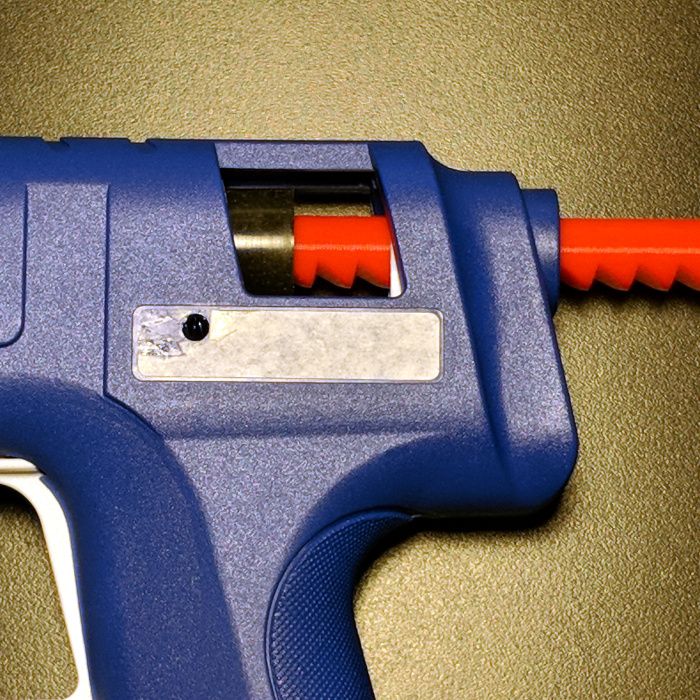 The majority of gun deaths around the world come from just six countries – one of which is the US. And analysis from Harvard University shows where there are more guns, more murders happen.
The majority of gun deaths around the world come from just six countries – one of which is the US. And analysis from Harvard University shows where there are more guns, more murders happen.
Anti-gun campaigners, obviously, disagree with the notion of a downloadable gun. Avery Gardiner, the co-president of the Brady Campaign, has said 3D-printed guns present a "supreme threat to our safety and security". Speaking after a court decision in August Gardiner said: "Already, there have been a wave of dangerous actors seeking to illegally post the blueprints online".
A mix of a libertarian attitude and the rewarding hobby aspect of designing and creating something is often what drives members of these decentralised 3D-printed gun networks to do what they do – that is, uploading schematics, sharing them, improving designs, and making 3D-printed gun work more easily accessible while remaining largely under the radar. Ivan claims he does this for a love of freedom and “radical” belief in the US first and second amendment: free speech and the right to bear arms.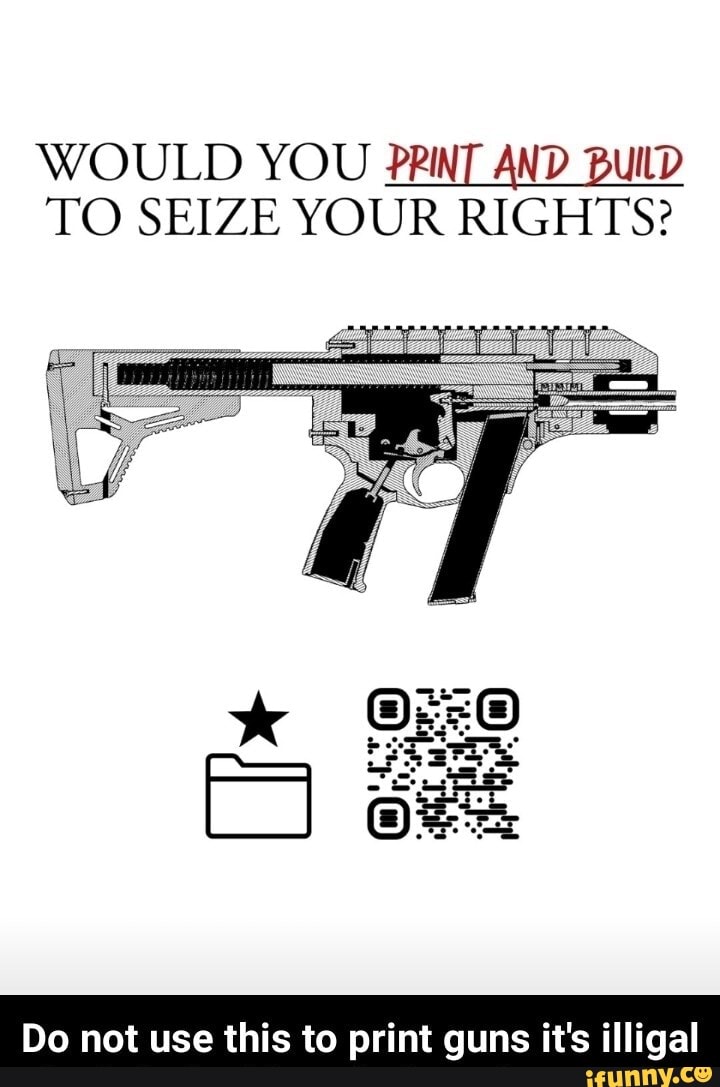
He takes this to such a radical degree though, that he even theorises he should technically be able to have his own Tomahawk Missiles, saying that they would be safer in his hands than in those of the US Military and its allies – given the country's track record for accidentally targeting civilians, including a wedding party in Afghanistan and a school bus in Yemen.
Referring to the mounting list of civilian killings carried about by US forces in foreign wars, Ivan sounds at times more like a radical leftist than the right wing “gun nut” many in America label him as. He claims not to have any specific ideology though, saying: “I get to be my own special snowflake.”
As of now, Ivan the Troll, Deterrence Dispensed, and the thousands many more 3D-printed gun enthusiasts connected to each other worldwide, have essentially let the cat out the bag. There is no way to stop the anonymous file sharing of 3D-printed guns online. Whether they’re just pretending to be doing this for reasons of liberty or otherwise, their message is clear: it’s already too late to stop.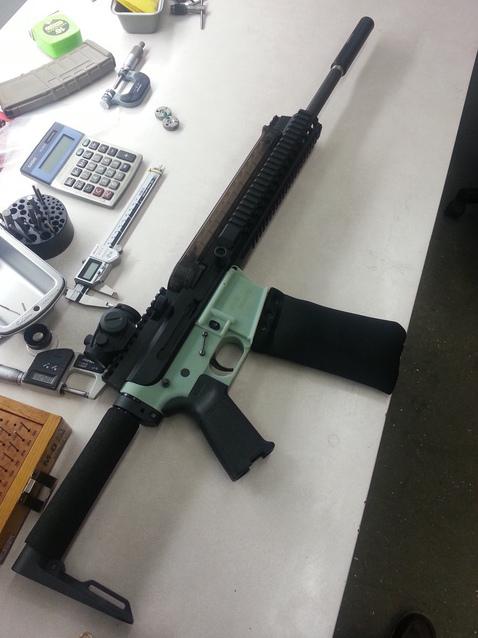
More great stories from WIRED
– Why parents should stop worrying about videogame addiction
– Why are we having less sex? Blame honesty
– Jeff Bezos wants to colonise space, but he's destroying Earth
– Why staff on the autism spectrum are a huge asset
– Why Tim Cook is a better Apple CEO than Steve Jobs
TopicsEngineeringPolitics
More from WIRED UKbusiness
The Great Crypto-Cop Brain Drain
Hunting down crypto criminals is a dying art as law enforcement officers jump in-house.
By Gian M. Volpicelli
3D Printed Pistol | Weapons printed on a 3D printer
With the help of 3D printing, you can make not only harmless souvenirs and trinkets. People did not limit themselves to the necessary mechanisms and things. Legislators were seriously worried, because enterprising designers and inquisitive minds tried to print weapons.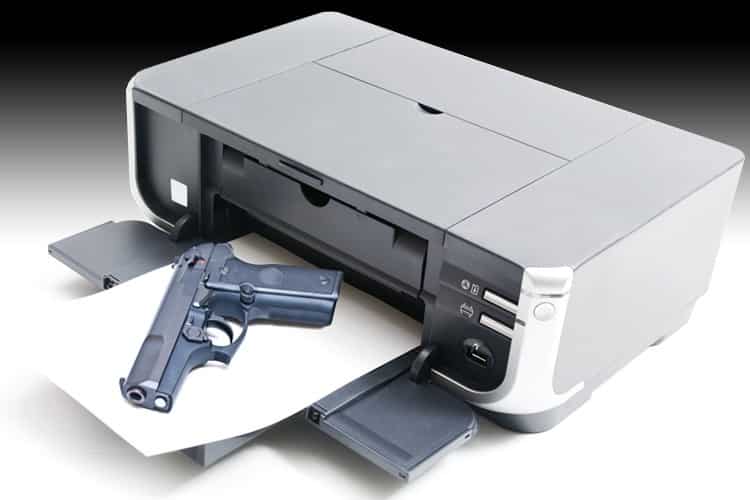 And not just a model for cosplay, but a real one, capable of firing live ammunition. But most importantly, they succeeded! Therefore, it was necessary to introduce restrictions at the legislative level for the safety of people.
And not just a model for cosplay, but a real one, capable of firing live ammunition. But most importantly, they succeeded! Therefore, it was necessary to introduce restrictions at the legislative level for the safety of people.
Weapons were printed not only by professional devices capable of metal printing. And quite ordinary ones, printing using FDM technology. At the same time, it was possible to print not only prototypes of existing weapon models, but also to develop completely unique models.
3D printed weapons - analogues
The most well-known variants of weapons analogues printed in whole or in part are:
- Сolt M1911 from Solid Сoncepts
- Replica of the grizzly .22 hunting rifle made of plastic by a Canadian with the pseudonym "Matthew"
- Horns for AK 47 and AR-15 - Feinstein from Defense Distributed
- Parts for AK-47
Concept3d printed Solt M1911 printer. For this, an alloy of chromium, nickel and molybdenum called Inconel 625 was used.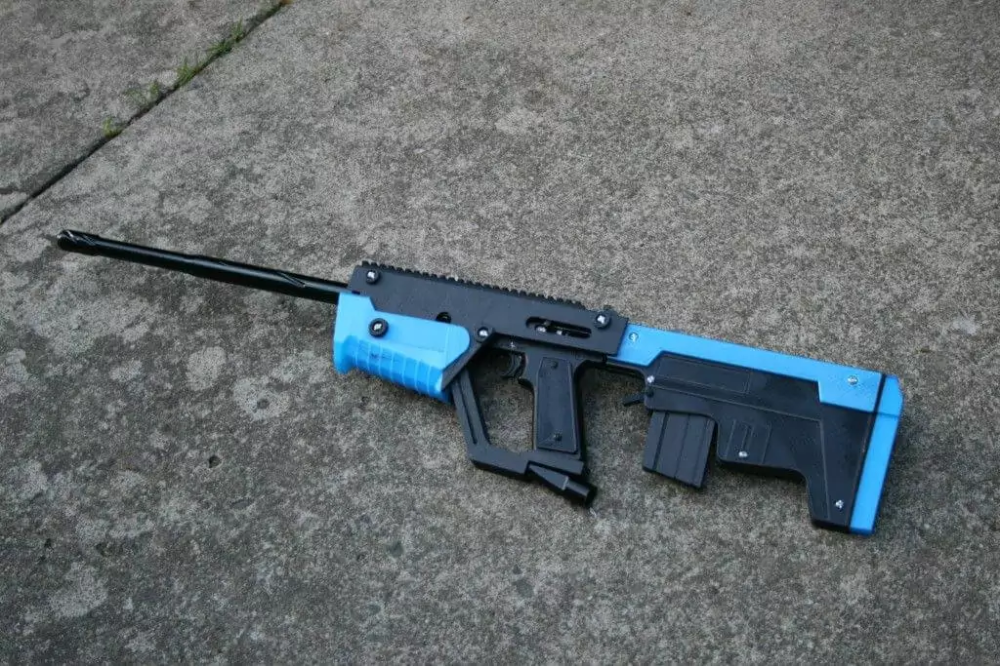 2000 shots can be fired from this weapon. In this case, the number of misfires will be minimal.
2000 shots can be fired from this weapon. In this case, the number of misfires will be minimal.
A grizzly .22 plastic hunting rifle capable of firing 14 rounds, after which its barrel becomes unusable. The weapon was built through trial and error on a Stratasys Dimension 1200e.
Other legally restricted options are hybrid systems of existing firearms.
New Designs
Many have gone further and have not tried to print existing models of weapons, but have tried to create new unique models. The most famous among them are:
- Liberator and Lulz Liberator
- Shutu-MP1
- Reprringer Pepperbox
The very first additive pistol was the Liberator. This iconic weapon appeared in 2013. It is completely printed on a Stratasys Dimension SST 3D printer, and its cost is about $10. The drawings of this device were freely available.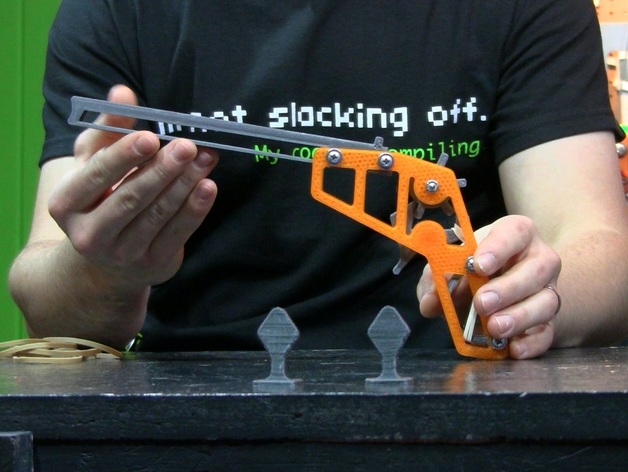 The disadvantages of this weapon were that it gave a lot of misfires, and was only capable of one shot. The shortcomings have been eliminated in the improved Lulz Liberator model. This plastic pistol is capable of firing up to 8 shots. Now the drawings are removed from the public domain. And the distribution and printing of Liberator is prohibited by law, although you can find a photo of it without problems.
The disadvantages of this weapon were that it gave a lot of misfires, and was only capable of one shot. The shortcomings have been eliminated in the improved Lulz Liberator model. This plastic pistol is capable of firing up to 8 shots. Now the drawings are removed from the public domain. And the distribution and printing of Liberator is prohibited by law, although you can find a photo of it without problems.
There is a video on the Internet that shows the tests and characteristics of the combat Shut-MP1. This is a half-printed firearm, meaning it consists of an AR15 receiver and a printed plastic module.
Non-combat printed weapons
This is not about cosplay, but about other options, such as, for example, airsoft guns and air pistols. The printing of such weapons can be carried out on conventional FDM printers. At the same time, there are samples of air rifles printed on 3D printers. This weapon may well be used even in competitions, and it is even capable of outperforming many analogues produced using classical technologies.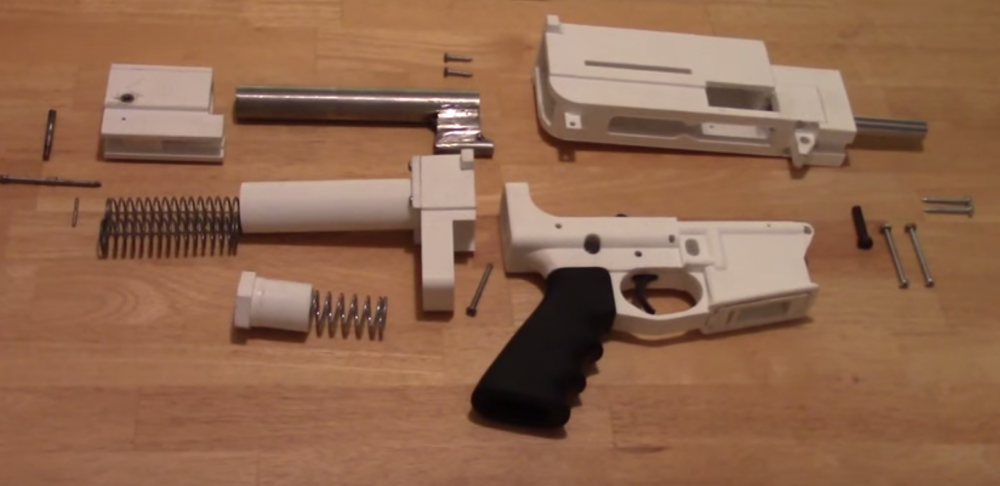 This rifle has a light weight, a rate of fire comparable to market weapons and is equipped with a comfortable handle and stand.
This rifle has a light weight, a rate of fire comparable to market weapons and is equipped with a comfortable handle and stand.
So the seal of the weapon is a reality. On the one hand, now everyone can practice as a weapon designer or create a tool for self-defense. But on the other hand, it is important to control the production of firearms, because the security of society directly depends on this.
is it possible to print airguns and firearms
Is it possible to make a gun on a 3D printer and is it legal?
Today's 3D printers offer enormous possibilities. They can print products of almost any complexity. Until quite recently, it was difficult to even imagine that a plastic weapon could shoot. However, it is already possible to make a pistol on a 3D printer, which, although not reliable, still fires live ammunition.
Can firearms be 3D printed?
Back in 2013, a young American activist for the free sale and distribution of weapons proved that plastic weapons can be printed on a 3D printer.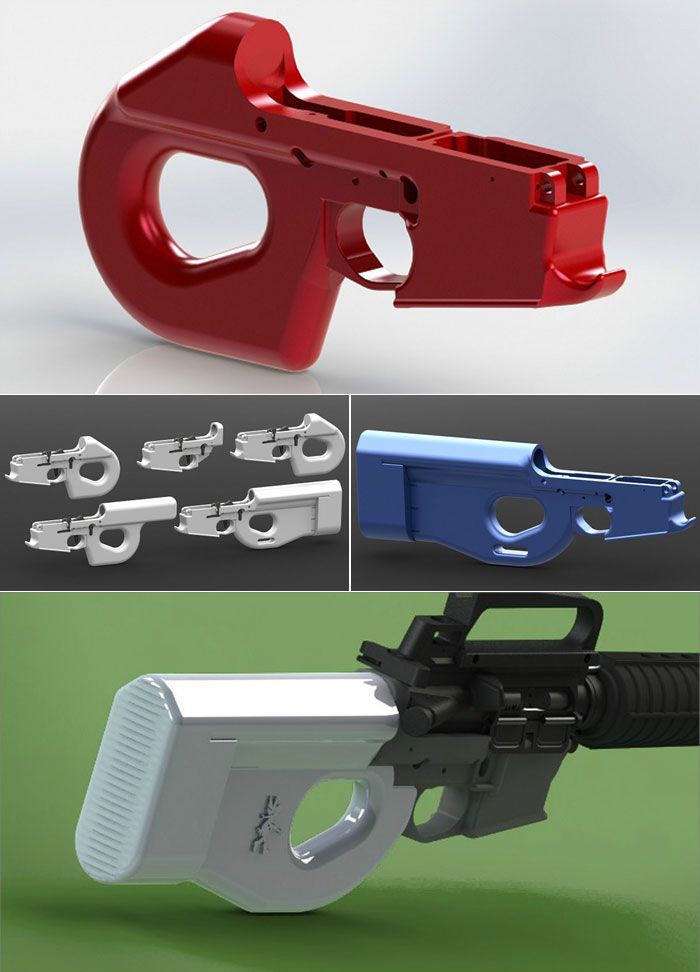 He was the first in the world to make a pistol in this way, in which only the striker was made separately from metal. All other parts were printed on an FDM printer.
He was the first in the world to make a pistol in this way, in which only the striker was made separately from metal. All other parts were printed on an FDM printer.
Today's 3D printers are capable of printing any CAD model, and these models of firearms have been available for over 10 years. If in previous years their printing required professional skills, now almost any user can master them. With a 3D printer and a finished model, it became quite possible to print a gun. Another thing is that such "creativity" is punishable by the laws of most countries.
The evolution of 3D printed weapons
Despite all the prohibitions and restrictions, the evolution of 3D printed firearms is moving at a great speed. The beginning was laid by the single-shot plastic pistol Liberator by American K. Wilson, which appeared in 2013. It had a simple design and was chambered for 380 ACP. Already after 10-12 shots, this weapon became unusable. However, the very possibility of printing firearms served as an impetus for the development of the idea.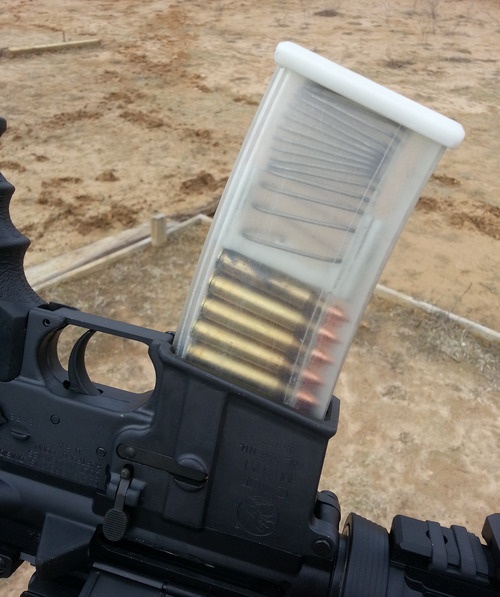 The author of the first pistol himself founded the Defense Distributed company, which began to actively improve the technology.
The author of the first pistol himself founded the Defense Distributed company, which began to actively improve the technology.
One of the ways to increase the durability of weapons was to increase the number of their barrels. At the beginning of 2014, the Japanese Y. Imura makes a 38 caliber Zig Zag pistol. He was able to fire up to 6 shots non-stop. The author of the weapon was recognized as a criminal and convicted.
The next step was the production of a six-shot revolver by J. Patrick in 2015. The PM522 Washbear has been shown in action on YouTube. The weapon was noticeably safer for the shooter compared to previous versions, but still allowed to fire only a few dozen rounds.
The first semi-automatic pistol for a 9 mm bullet appeared in 2016 under the name Shuty-MP1. It was developed by a handicraft gunsmith who hid under the pseudonym Derwood. It wasn't exactly a plastic weapon. The author used some metal parts from factory pistols - a barrel, a firing pin, a bolt and several springs.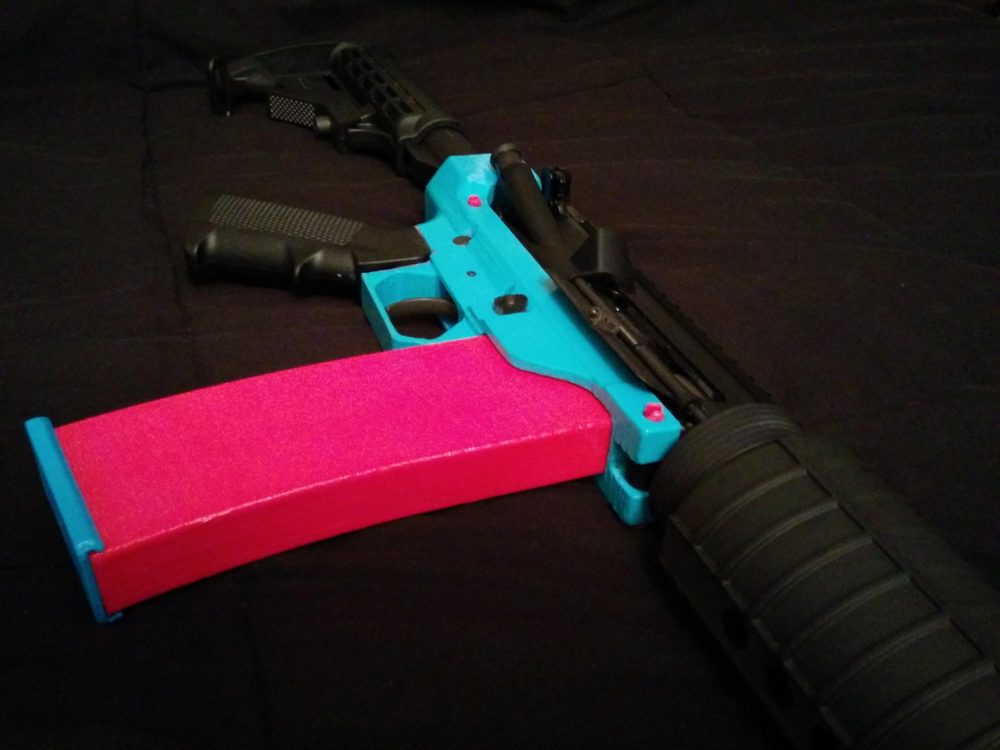 This made it possible to ensure a rate of fire of more than 46 rounds / min. However, when changing the store, the plastic case had to be cooled. In 2017, the same master proposed an improved model - Shuty AP-9.
This made it possible to ensure a rate of fire of more than 46 rounds / min. However, when changing the store, the plastic case had to be cooled. In 2017, the same master proposed an improved model - Shuty AP-9.
The main contribution to the development of 3D printed weapon printing technology was made by Defense Distributed, which brought together a group of like-minded activists. First, these enthusiasts won legal proceedings in the United States and obtained permission to 3D-print weapons, which greatly expanded their capabilities. Secondly, they were able to set up a professional business with product testing and quality control. As a result, in 2018–19 they developed numerous models of a variety of firearms - from pistols to carbines. They posted over 30 files for printing original gun parts. Most of them were plastic, and the metal parts were not made from purchased, ready-made elements, but from simple metal profiles (tubes, strips, etc.), which are sold in ordinary hardware stores.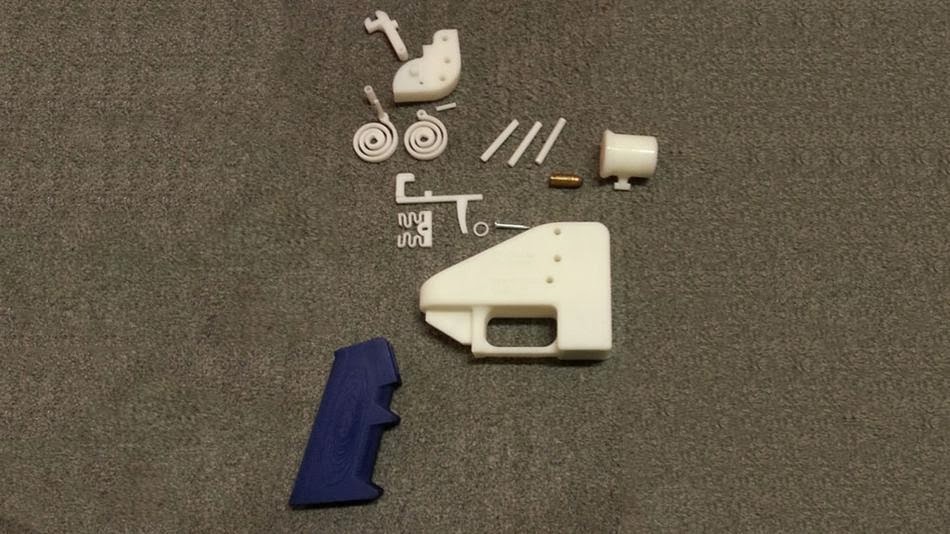 This made it possible to exclude the use of parts patented by gunsmiths.
This made it possible to exclude the use of parts patented by gunsmiths.
At the moment, the semi-automatic carbine FGC-9, developed on the basis of the Shuty AP-9, has become the pinnacle of "creativity" of Defense Distributed. At the same time, there is not a single factory part in it. The barrel for the 9 mm cartridge is made of steel pipe using electrochemical processing.
Where can I get drawings and what should I look for?
Gun manufacturing bans make it much more difficult to access blueprints and models of guns for 3D printing. The right to free placement of information was achieved only by Defense Distributed. Their website provides free access to drawings, models and technologies. Other information can be found on the Internet, but they are usually illegal.
When choosing a model, pay attention to the following information:
- material used;
- cartridge for which the model is designed;
- number of cartridges in the magazine, rate of fire;
- operating time before failure.
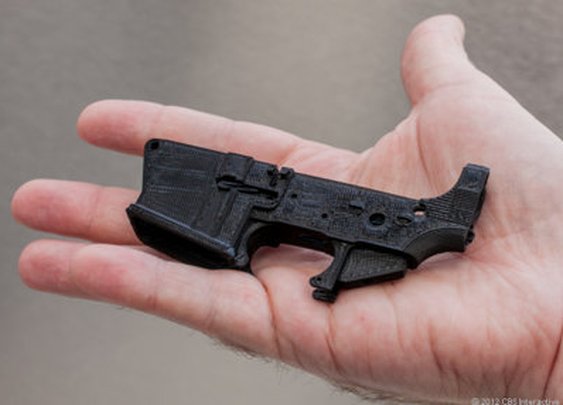
It is important to clarify which metal parts will need to be purchased separately, in addition to plastic for printing on a printer.
What does the law say in different countries?
The only country where firearms can be 3D printed is the United States. Gun Control Act 19 applies here68, giving Americans the right to make weapons, but only for personal use. Only one limitation is put forward: it must be determined by metal detectors, that is, it must have a metal element. In virtually all other countries, homemade manufacture and repair of weapons for any purpose is prohibited by law. In Russia, printing it on a 3D printer falls under the Criminal Code of the Russian Federation and is punishable by imprisonment.
Should we be afraid of plastic weapons?
The question of how dangerous a weapon printed on a printer is becoming increasingly important. Despite all the prohibitions, it is extremely difficult to control the spread of technology around the world.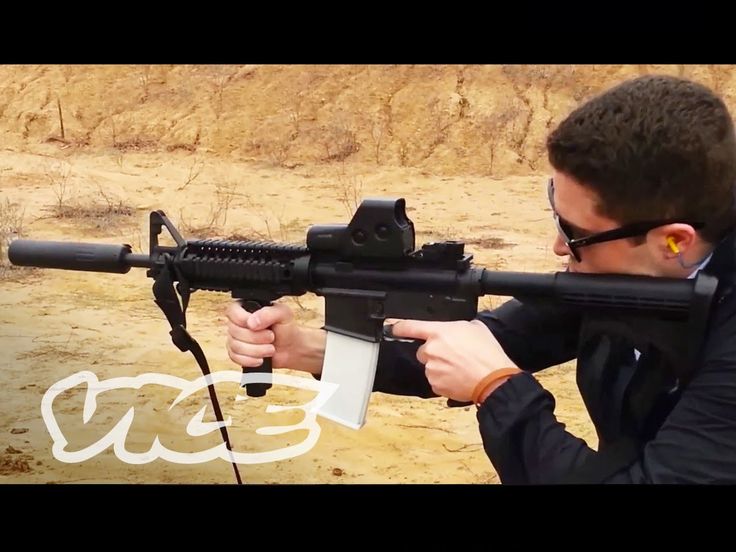 The availability of 3D printers and the increase in their functionality make it possible to master the production of plastic guns at home. How dangerous is such a weapon?
The availability of 3D printers and the increase in their functionality make it possible to master the production of plastic guns at home. How dangerous is such a weapon?
Most experts agree that currently printed weapons are more of an interesting toy. It is quite expensive and is designed to carry out only a few dozen shots. Moreover, such pistols are quite dangerous for the shooter himself with live ammunition, because they can explode in their hands.
However, the danger cannot be underestimated. It is easier and cheaper for a "serious" criminal to buy illegal military weapons than to make them on a printer. At the same time, there may be "enthusiasts" who, for their own interest, can make a pistol and try it out in action. Such inadequate people represent an undoubted danger. In addition, the temptation is great for terrorists. Metal detectors do not detect a plastic gun, which means that it is easier to carry it, for example, on an airplane.
Important! Plastic weapons have a very small resource.
At the same time, sometimes just one shot is enough to kill a person.
3D printed firearms have the following advantages:
- the ability to make military weapons at home;
- light weight;
- availability of materials;
- Ability to copy famous weapon models.
Always remember that there are significant disadvantages:
- illegal production;
- high cost of weapons;
- very small resource and limited rate of fire;
- danger to the shooter himself.
Currently, plastic weapons have more disadvantages than advantages, and most importantly, you can get a real prison term for making them.
Prospects for printing weapons
The potential for 3D printing of firearms is far from exhausted. The expansion of equipment capabilities and the development of innovative materials indicate that in the near future such weapons may approach military weapons in terms of characteristics.



